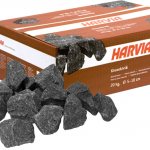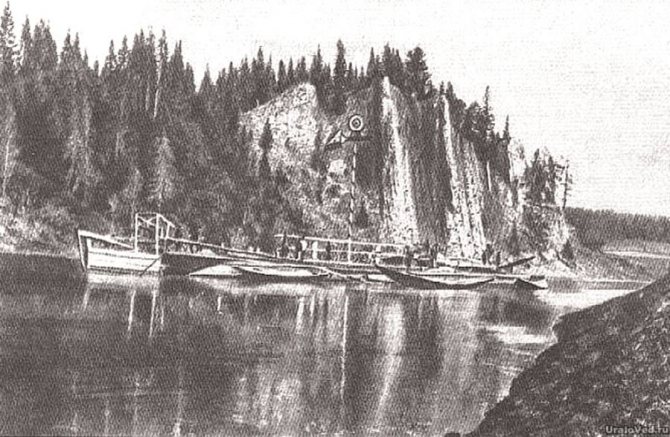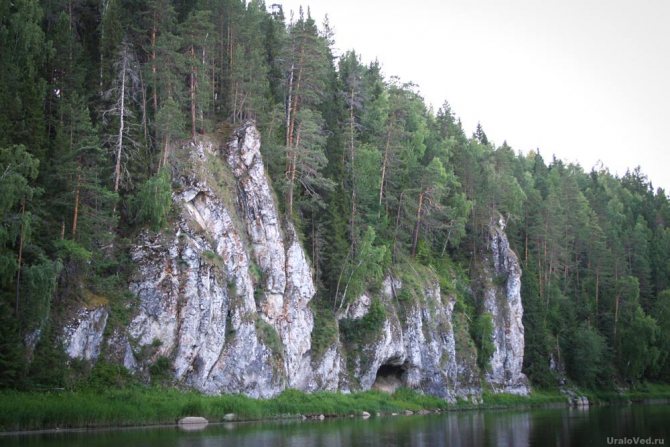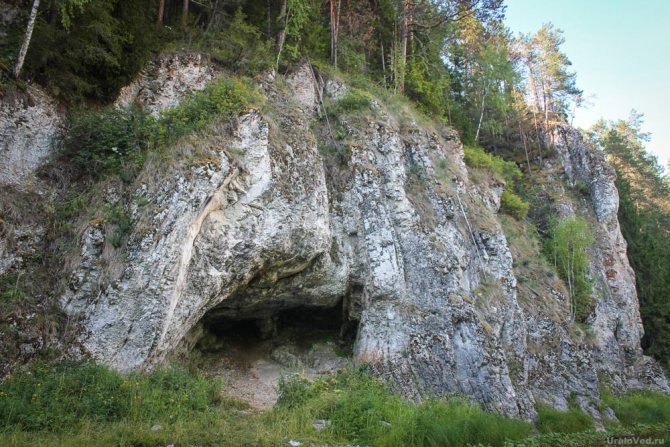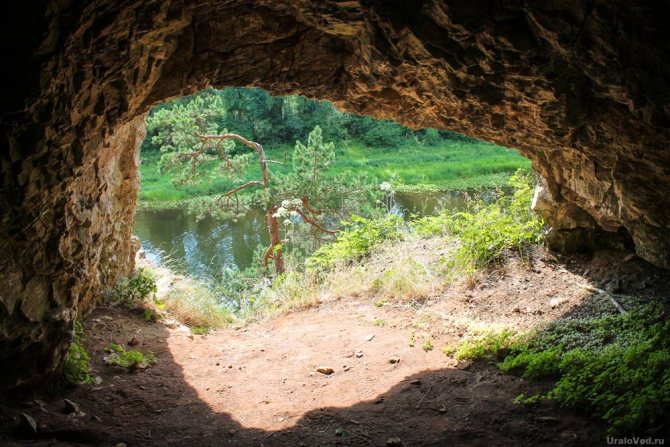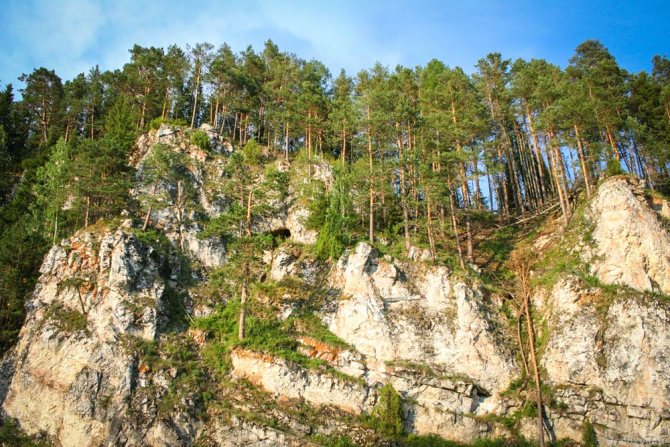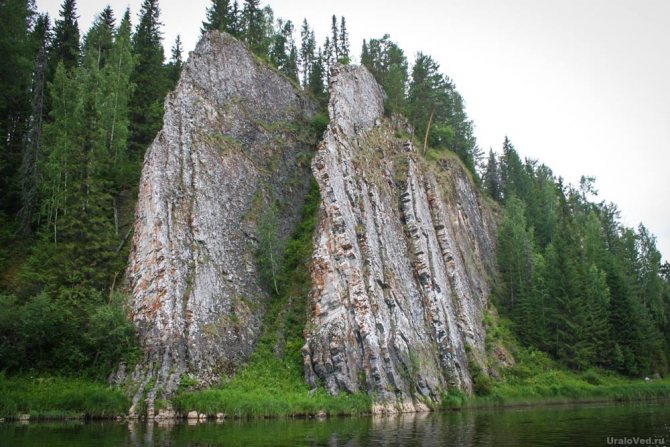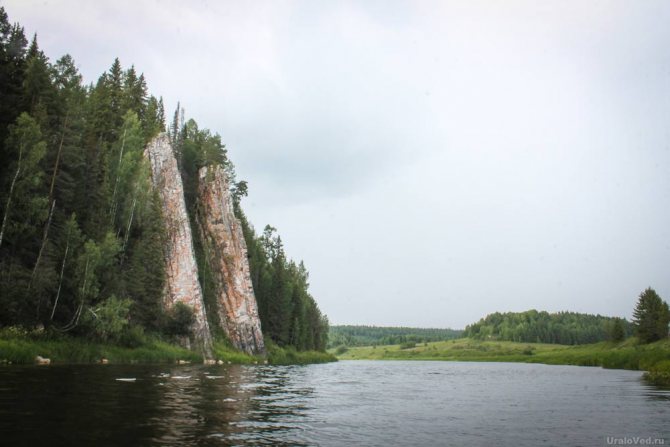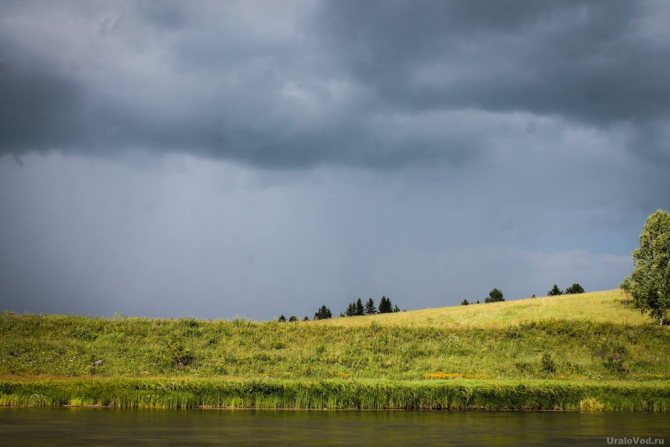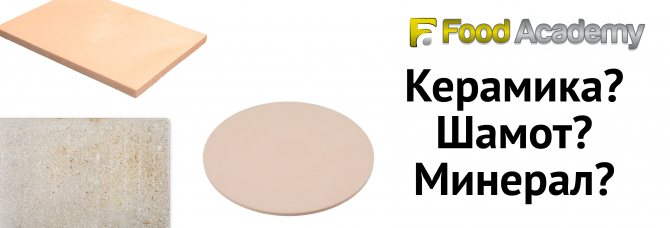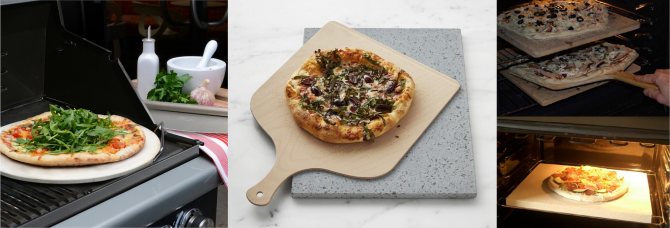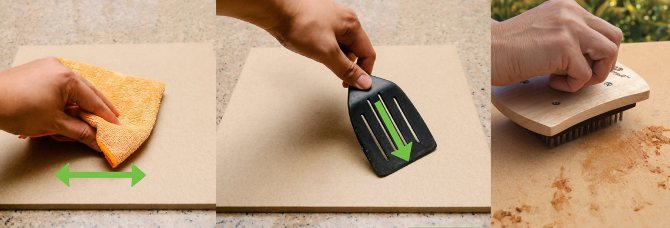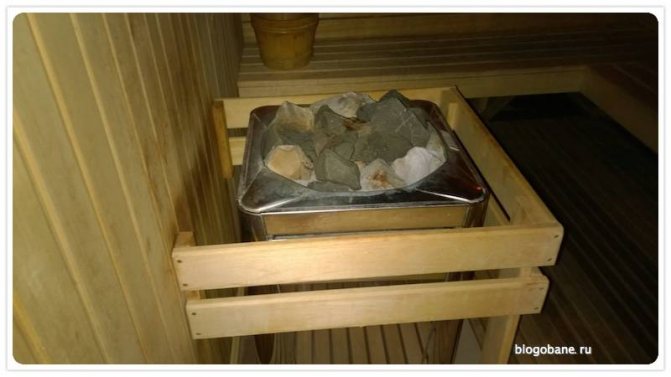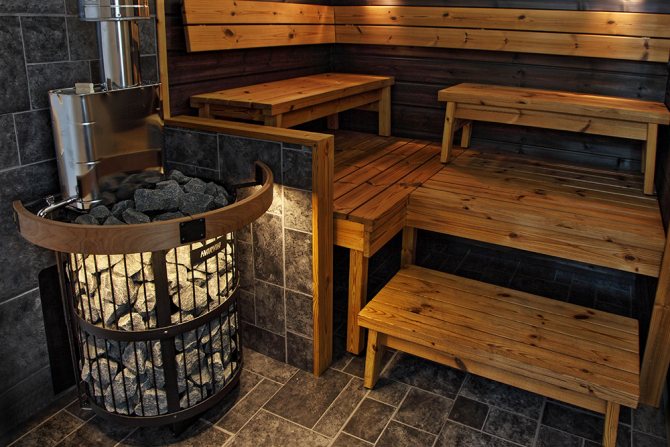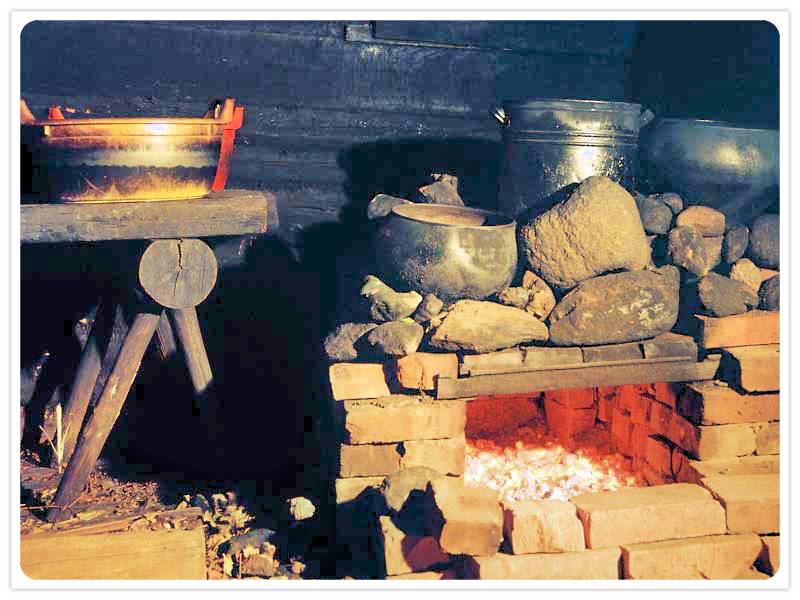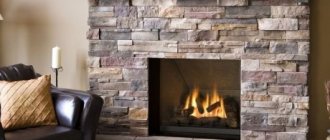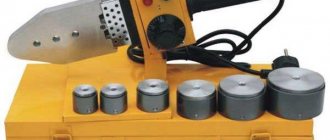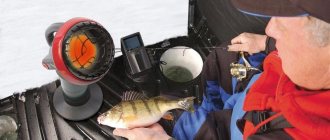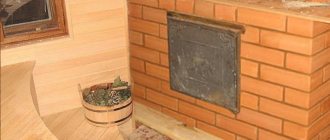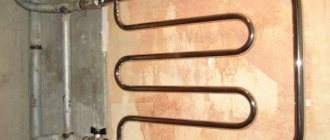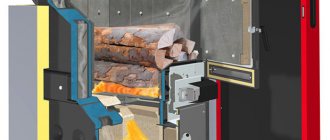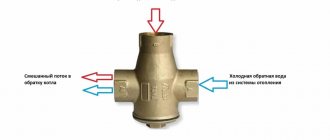A special baking stone for baking turns a regular oven into a Russian oven, tandoor or pizza oven.
A hob made of clay or natural mineral helps to equalize the temperature in the oven, thanks to which yeast dough products do not crack and are ideally baked. There are different types of solid slabs for home cooking on sale. To choose the right one, study the types, materials, sizes and other important parameters of this useful device.
In this post:
How to choose stones?
What stones should be placed in the sauna stove? To make the right choice, you need to take into account a few professional tips. It should be noted that not all stones are suitable for such purposes. The material must have high thermal conductivity and be environmentally friendly. Stones should not emit substances harmful to human health when heated. Therefore, it is worth purchasing material only in specialized retail outlets that have a good reputation.
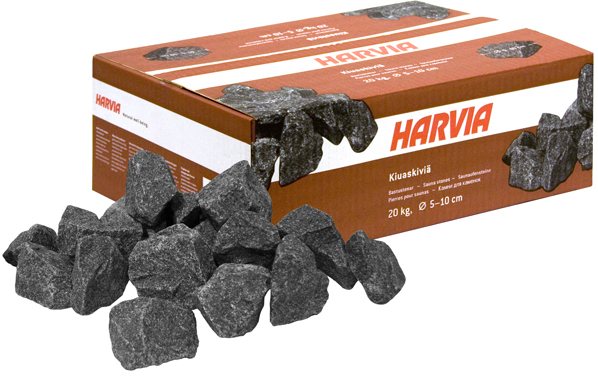
Natural stones of unknown origin should not be used for these purposes, since not all breeds are safe for humans. Some stones do not give off heat well, which is unacceptable for a steam room stove. The store should be asked to provide the necessary information about decorative stones. They must have the following characteristics:
- Heat capacity. This is the ability of a stone to accumulate heat, and then gradually release it. This allows you to maintain a high room temperature longer.
- Heat resistance. An indicator that characterizes the limiting threshold of temperatures that a stone can withstand.
- Safety. Stones should not release harmful components into the environment.
- Expansion rate when heated. This figure should be very low. Otherwise, the stone will crumble when the temperature rises.
Before considering how to properly lay stones in the sauna stove, you need to pay attention to the choice of suitable rocks.
Raspberry quartzite
Bath stones can be collected along the banks of rivers and lakes.
The best stones can be collected in mountainous areas, in the South of Russia or near water bodies. The river rock is even better as it has passed the test with water and direct sunlight over time.
You should choose an average size, after knocking them against each other. The sound of a strong bath material should not be muffled. Sandstone is also not worth taking, it quickly collapses and is not at all intended for furnaces. It is better to collect dark rounded stones right next to the water. These will last a long time, but they still need to be looked after.
It is not easy to serve water into the stove, but herbal infusions, aromatic oils. It is necessary to rinse the material once a year and do not use steam chemicals, as the material will quickly deteriorate.
You need to choose stones based on their medicinal properties and quality characteristics. Only in this way the steam will be "light", and the steam room will be useful.
This type of volcanic stone looks like dark marble, it is durable and has low water absorption. It is mined in Karelia, where the ecological situation is good. It expands evenly when heated, heats up for a long time, but cools down quickly enough.
Gabrodiabase for a bath is one of the most inexpensive types of stones. This is due to several factors:
- It takes a long time to heat up, but it cools down quickly.
- When overheated, it begins to emit a specific, rather unpleasant odor. As for essential oils, they are not used, since carbon deposits immediately appear on the stones.
- Gabbro-diabase must often be sorted out and damaged specimens must be removed, which begin to release sand and clog the grates of the stove.
We offer you to familiarize yourself with: Do-it-yourself sauna benches drawings
The main advantage of gabbro-diabase is its low price. This stone does not represent decorative and medicinal value.
This type of natural material is more durable than gabbro-diabase. If there is a choice of which stone is better for a bath in a steam room, then it is recommended to pay attention to this option. Talcochlorite can have various shades of gray. Minerals do not look very attractive, but they have a good heat capacity - that is why they are used for lining stoves.
When heated, these stones do not emit harmful compounds, although some of them can "dust". This problem can be avoided by thoroughly washing and baking them before using them for the first time.
Talcochlorite warms up faster than brick, retains thermal energy 2.5 times better, and releases it evenly and for a long time. The steam from these stones is pleasant and light. The peculiarity of soapstone is the ability to emit soft heat, which is similar to the sun. As a result of this effect, metabolism is normalized, immunity is increased.
This type of stone is rare. It features high density and minimal moisture absorption, strength, hardness and wear resistance.
Raspberry quartzite is characterized by resistance to cracking, so that cold water is poured onto it even at high heat. Over time, these stones, even with intensive use, do not change their shape and do not emit harmful substances. But when buying, you need to be careful not to come across split copies.
Jadeite is an excellent choice for baths and saunas
Jadeite is a durable semi-precious stone with high heat capacity and thermal stability. It is a very beautiful green stone with an original natural texture.
Price from 2200 rubles for 20 kilograms.
Bath stones made of soapstone
Talcochlorite is a mountainous rock with a layered structure in which talcum and magnetite formed a dense mass of a noble gray-green color. Due to its high heat capacity and thermal conductivity, good heat storage capacity and fire resistance, soapstone stones are widely used in baths and saunas. Does not absorb water and is not subject to destruction.
Price from 300 rubles for 20 kilograms.
A popular choice of bath stones - gabro-diabase
Gabbro-diabase is a dense and very durable stone with low water absorption and high heat capacity. This is a deep rock of volcanic origin, therefore it is able to withstand the heating-cooling mode for a very long time. Gabbro-diabase heats up quickly and evenly and gives off heat for a rather long time, which is typical for more expensive stones.
Price from 170 rubles for 20 kilograms.
Raspberry quartzite is a fairly rare mineral with a beautiful purple or crimson red color. It has a high density and good heat capacity - it heats up quickly, retains heat for a long time. Due to their physical properties, the stones perfectly withstand the heating - cooling regime, do not crack and give light steam.
Price from 200 rubles for 20 kilograms.
Porphyrite is a rock of volcanic origin, the color is brown, reddish-brown, gray-black. Despite the low price, this is an excellent stone for electric and woodburning stoves - dense, very durable, capable of withstanding the "heating - cooling" cycle without cracking and damage for a very long time.
Price from 250 rubles for 20 kilograms.
Varieties of stones
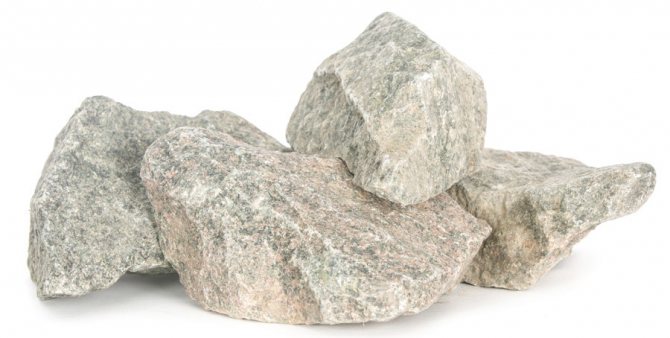

Stacking stones in the sauna stove is a responsible undertaking. It is worth starting to consider it with the main points of choosing rocks suitable for operation at high temperatures.The following types of stones are suitable for a sauna stove:
| Breed name | Description |
| Jade | It is a semi-precious stone. Its properties are fully consistent with the requirements of steam ovens. It is a durable, non-water-absorbing mineral with durability and high heat dissipation. |
| Talcochlorite | It is one of the best materials for a steam room stove. It is able not only to accumulate heat, but also to distribute it evenly in the room. In this case, the bath warms up gradually, and the high temperature remains for a long time in the steam room. The heating limit for this stone is 1,600 ° C |
| Basalt | It is a very strong and therefore durable stone. It is often used to equip sauna stoves. Basalt does not crumble, it retains its integrity for a long time. It accumulates heat perfectly, which ensures that a high temperature in the steam room is maintained for a long time. |
| Gabbro-diabase | This stone is a collection of minerals. Being of volcanic origin, it can withstand high temperatures. Moreover, all components are safe for humans, which makes the mineral especially valuable for use in a steam room. |
| Quartzite | This rock contains 90% quartzite. This mineral heats up quickly, but it must be used in combination with other stones. |
| Peridotite | The composition includes olivine and pyroxene, so the mineral is safe for humans. The stone can withstand great heat, as it is a volcanic rock. |
| Chromite | The mineral consists mainly of chromium, which is a safe substance for humans. As a result of heating, the structure of the stone does not expand. It is very dense and heavy. |
When laying stones in a sauna stove, it is worth avoiding the use of rocks such as granite, spar, mica, electroporcelain, quartz, pyrite, marble, flint, limestone.
Rocks of stones, their features and impact on the human body
A visit to the steam room can be not only pleasant, but also rewarding. It is only important to clarify the question of how to choose stones for the bath and which are the best ones.
A good bath is not only a lot of pleasure, but also has a positive effect on health. Light, hot steam is the result of a well-built heater. The stones in the steam room are able to accumulate heat and release it slowly. Correctly selected breeds, when interacting with water, will fill the room with useful trace elements, an amazing aroma, helping to prevent various diseases.
This effect can be achieved only by knowing the characteristics of minerals, their ability to transfer heat. They must have a certain strength, high heat capacity, meet environmental safety requirements and emphasize the aesthetic component of the room itself. It is important to be able to understand the healing properties of this or that stone so that the effectiveness of bath procedures is maximized.
For a Russian bath, where a sharp temperature drop occurs when water is supplied to a heated stove, stones should be selected especially strong, heat-resistant. Of the rocks, nephrite, jadeite, pyroxenites will be the most suitable. Being formed at a depth of many kilometers under high pressure, they have the necessary strength.
In the sauna, the challenges of stones are less severe. Almost all breeds that are suitable for a Russian bath can be used. However, talcum chloride is preferred.
3. Turkish bath
The peculiarity of the Turkish bath is that it is the coldest of all types of baths. There is no heater here. Steam generators are used to create steam. Therefore, the main use of stone is as a finishing material. Marble is best suited for this purpose.
It is a chamber located inside the oven. Although it does not come into direct contact with the flame, it heats up strongly due to the fire outside and furnace gases.As a result, the stones in it are subject to destruction. Therefore, you need to use only those that have high strength. Jade is able to hold out the longest, thanks to the fibrous, tangled structure that does not allow crumpling.
A stove that is freely washed by fire is the most extreme environment for stones. In addition to the high temperature, they are affected by the ongoing oxidative processes. In such conditions, any, even the most durable rocks are destroyed. The most economical solution is to use inexpensive stones, regularly sorting out and replacing the contents of the stove.
3. Electric ovens
Electric ovens are successfully used in both Russian and Finnish baths. They are more sensitive to the size of the minerals placed in it than to the rock. The optimal size of stones is no more than 7 cm, and their placement is also different. All natural stones are suitable for the electric heater, which have the heat resistance and thermal conductivity necessary for a bath.
The service life of the stone also depends on the type of furnace. This indicator is also influenced by impurities, frequency of use, and size also matters.
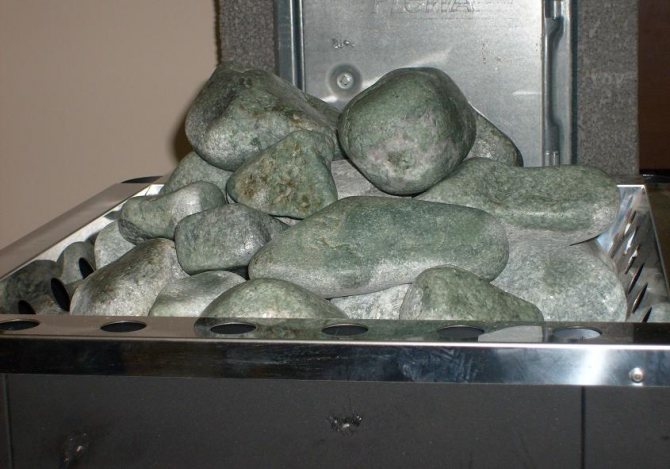

There are a number of parameters that minerals for a bath must meet. If you do not understand this issue, then you can get advice from a specialist or just buy a ready-made set. Ignorance in this case can lead to very disastrous consequences, since many natural minerals absorb harmful substances, which are then released along with the steam.
To generate steam, stones are poured with water
If you buy minerals in a store, then the packaging must be marked that the products have passed radiation control. An interesting alternative to natural stones is cast iron balls. The steam from them does not have any healing effect on the body, but cast iron perfectly accumulates heat and gives it away for a long time.
If you decide to buy stones for the sauna stove yourself, then they must meet the following criteria:
- high temperature resistance - minerals for a sauna stove should not crack or crack in a fire. In order to check compliance with this requirement right on the spot, you can hit a stone with a hammer or other stone. Another test option is to red-hot the cobblestone in a fire and then toss it into cold water. A truly high-quality stone will not crack from this;
Polished stones promote better air circulation, but take longer to warm up than chipped stones
- the correct shape and size - this parameter strongly depends on the type of oven. If you use an ordinary wood-burning stove in your bath, then it is better to take large cobblestones with a diameter of 70–130 mm for it. For small electric stoves, you will need smaller stones - 50-60 mm. As for the shape, it can be any, but it should be borne in mind that flat stones are easier to lay and they fit more into the oven. The number of boulders also directly depends on the size of the oven.
- ability to keep heat - the higher it is, the longer the stones will generate heat. You can check this point by the specific gravity of the mineral - a stone that accumulates heat well should be heavy, dense and with a homogeneous structure.
Helpful advice! A universal option for stones in a sauna heater is salt bricks. They are purchased in specialized stores and have optimal performance characteristics.
Salt brick has antiseptic properties
There are a number of general recommendations that will help you not to be mistaken in choosing the filling for the oven in your steam room:
- if you choose between sea and river stones, then the latter should be preferred. Cobblestones from the sea are destroyed faster and cannot boast of high strength indicators, but river ones withstand high temperatures much better;
- the shape of the stones depends mainly on your aesthetic preferences.If you want the masonry not only to give a lot of steam, but also to please the eye, then you need to lay the most beautiful stones of the correct shape on top;
- if you are not sure what kind of stone is needed for the bath, as well as how many boulders to put in the oven, then you should read the instructions that come with the package with stones. It should indicate how many stones you need to put, as well as what healing properties this or that mineral has;
River stone is more resistant to high temperatures than sea stone
- if you do not want to buy cobblestones, but prefer to collect them yourself, then it is better to do it in the field, not in the water. The fact is that the "field" stones have already been severely hardened by the sun, wind, rain and other natural phenomena, therefore, the temperature drops in the furnace should be tolerated without any problems;
- how to choose a stone for a bath of the correct shape yourself? The cobblestone should be round and smooth. The presence of cracks and chips can lead to premature cracking when heated;
- the structure of the mineral must be uniform. In the presence of impurities and inclusions, the stone can quickly crumble or even burst right in the oven. In addition, various impurities, such as iron oxide, can release substances harmful to health when heated.
The stones collected in the field are resistant to weather and weather conditions, therefore they are more suitable for a bath than those collected in water
We suggest that you familiarize yourself with: Pour the floor on wooden floors
Despite the fact that in nature there is a huge variety of rocks, not all of them are suitable for use in a bath. It is best to put magmatic cobblestones in the furnace, since they are already hardened by high temperatures and high pressure, therefore they can boast of high density and heat resistance.
The content of silica in the mineral should not exceed 50%, otherwise it becomes unsuitable for the steam room. The optimum content is 44–45%, these are the characteristics of basalts, talcum chlorites and other rocks listed above. If we talk about the properties of stones for a bath. belonging to sedimentary or metamorphic rocks, they are also a bad option.
By origin, rocks are divided into three groups
What stones are best for a steam bath? Dense, medium-sized, magmatic in origin. The worst option is stones with impurities. Firstly, the presence of various foreign substances and inclusions disturbs the homogeneity of the structure of the cobblestone, which leads to its cracking when heated. Secondly, inclusions can be harmful to health, and the effect on the body of harmful substances in the steam room is several times stronger.
Helpful advice! In specialized stores, you can find out all the answers to your questions regarding the use of a particular mineral.
As already mentioned, the recommended installation method is usually written on the packaging with stones. If there are no such recommendations or the minerals are purchased without packaging, then it is worth adhering to a number of recommendations.
The scheme of laying stones in the stove
If you choose which stone is suitable for a sauna with a wood-burning stove, then keep in mind that you need to lay the largest cobblestones down, then medium ones, and for the topmost layer you can again use stones of large diameter. Such a laying scheme will not only give you a good heat capacity of the steam room, but also ensure an even flow of water to all levels.
Some bathhouse attendants do not advise using small and medium-sized cobblestones for a wood-burning stove, arguing that less steam will be released this way. In fact, if you do not use small stones in the masonry, then the water will fall on the hot bottom of the stove.And this will lead not only to the appearance of an unpleasant steam with a metallic taste, but also to corrosion of the bottom of the steam room.
Various minerals for the bath can be purchased on the construction market by weight.
Jade for the sauna stove in the package (bucket)
Stone size
When choosing stones, the type of stove must also be taken into account. It can be wood, open or electric. Its size is also noticeably different. For example, considering how to put stones in the Vesuvius sauna stove (this is one of the most popular models), it is worth noting that the size of the fraction will be different. Stacking stones of different sizes is encouraged. Moreover, the rocks of the stone must be mixed. This will also have a positive effect on the operation of the oven.
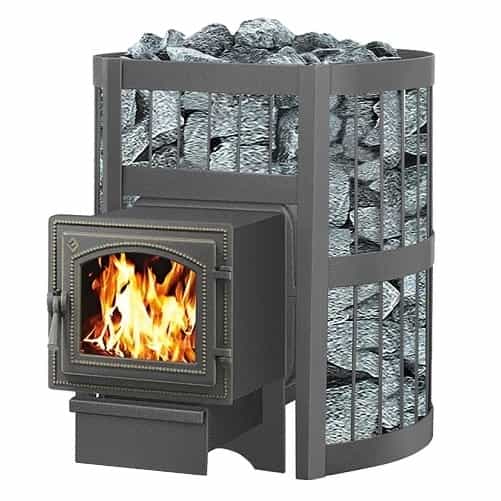

When laying stones in a Vesuvius sauna stove or other similar structure, you need to select a fraction ranging in size from 6 to 20 cm in diameter. This principle applies to most open and wood-burning stoves.
Only large stones are placed in a closed Russian oven. There should be enough free space between them. Too dense masonry will not allow steam to be generated. Therefore, this type of heater requires a large fraction.
If the stove is small, with electric heating elements, you need to choose stones with a diameter of 5-8 cm. They should pass between the heating elements, but at the same time not damage them when heated. Therefore, small stones will fill the space inside the small electric oven.
What you need to know about baking stones
Even the most ordinary dishes cooked in ancient clay ovens seem to be much tastier. The reason lies in the correct distribution and maintenance of the desired temperature inside these ancient cooking devices. In electric and especially gas ovens, the heat supply remains uneven.
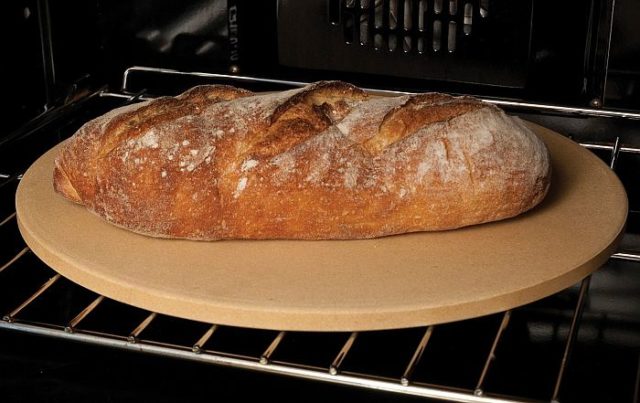

What is the secret to perfect baking
The materials from which the baking stones are made are characterized by low thermal conductivity, due to which the overall temperature inside the oven evens out at all levels and remains unchanged throughout the entire cooking process.
Even when the oven door is opened, the temperature inside remains practically unchanged. That is, you get the opportunity to control the baking of bread products and muffins without fear of interfering with the yeast growth process in any way.
Moreover, the pledged products are immediately exposed to a strong heat effect, which avoids overdrying. Therefore, bread, pizza, pies, rolls and tarts are baked evenly, do not crack or skew.
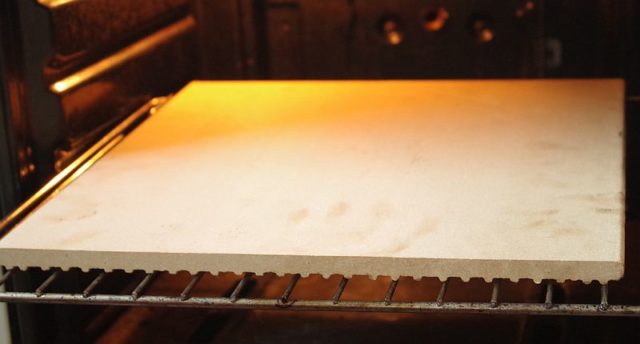

The porosity of the material is of no less importance. The regulation of dough moisture depends on it, which is especially important when baking bakery products. This structure ensures proper yeast growth and a crisp crust in any flour product.
What does the form depend on?
When making baking stones, they are given a round or rectangular shape. There are no special rules on this score. They are dictated rather by tradition or functionality. Round fireclay boards traditionally used by Italians. These are usually positioned as stones for baking pizza, but they are also suitable for preparing other dishes.
Rectangular and square baking trays made of stone are functionally more convenient. They can accommodate more small products or non-standard sizes (for example, baguettes or long rolls).
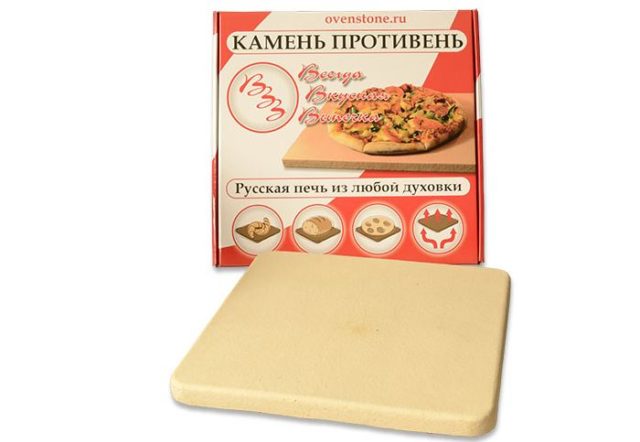

Separately, it is necessary to mention professional baking stones, which are usually rectangular. In this case, the corners remain sharp, and not rounded. This allows several cookers to be stacked side by side in large ovens.
Another advantage is the presence of special legs. Mini feet reduce temperature shock, so these baking trays can be placed even in preheated ovens.
What should be the size of the stone for the oven
The size of a stone or ceramic baking plate depends primarily on the dimensions of the oven.It is very important that indicators such as length and width are less by 4-5 centimetersin the corresponding indicators of the oven. Otherwise, hot air circulation will be impaired.
Thickness can range from one to three centimeters. Thinner baking boards are also more fragile, but they heat up faster and are suitable for cooking dishes such as pizza or pita bread. A thickness of 2-2.5 centimeters is considered classic, since it is more versatile and suitable for cooking any dishes.
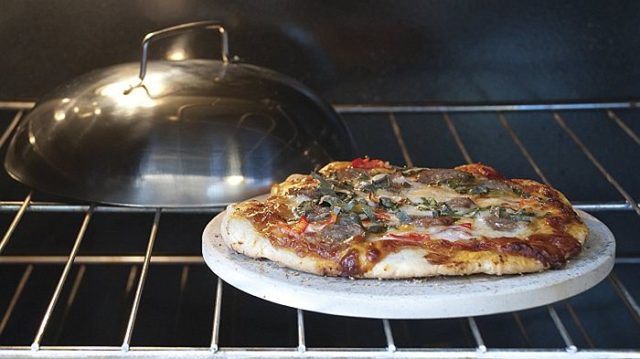

Why are rocks mixed?
Considering how to put stones in a mesh sauna stove, an open or closed heater, you need to pay attention to one nuance. Often rocks of minerals are mixed, as this saves money for the family budget. It is quite difficult to fill a spacious stove completely with expensive types of stones. Therefore, they are diluted with cheaper minerals. You can stack stones in a mix or in layers.
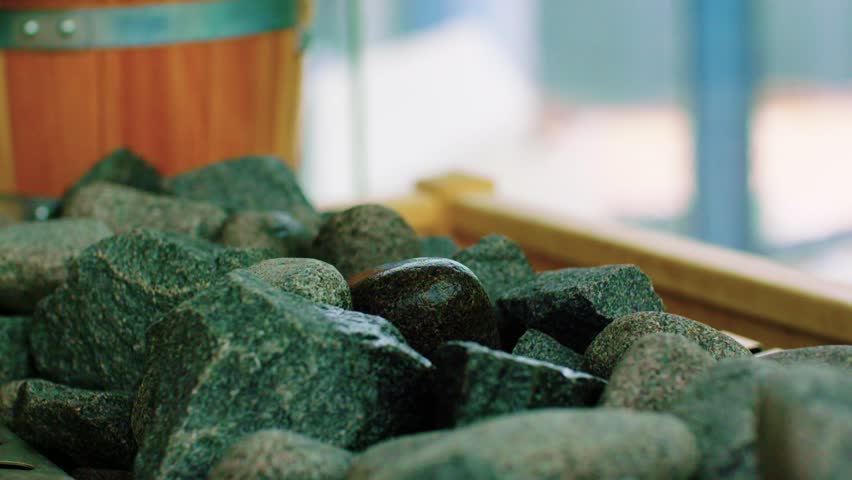

Stones that heat up faster are laid down. Other types of minerals are laid out on top.
The stones are also mixed in order to create the aesthetic appearance of the stove. Simpler, cheaper varieties of minerals are put down. Beautiful reddish, greenish stones of saturated shades are laid out on top.
It is also worth considering that the amount of steam that the oven produces depends on the shape. It is necessary to take into account the order in which the stone is placed in the sauna stove. Chipped and tumbling shapes are best suited for a steam room. The first of these varieties has a large area. However, this is also a disadvantage, since such stones are covered with cracks due to insufficient strength.
Tumbled stones are durable, since fragile specimens are sifted out during their processing. In terms of area, these stones are not inferior to chipped minerals, but their cost is an order of magnitude higher. Therefore, such rocks are laid down, where the temperature is higher. Cheap chipped stones can be placed on top. Moreover, the appearance of such minerals is quite beautiful.
Recommendations for use
Minerals prohibited for use are, first of all, stones collected in places with a high radiation background. For example, in the dumps of former mines, in mining, in quarries. If you are not sure about the safety of purchased or collected stones, a dosimeter or a special examination will help to find out this indicator.
We also do not recommend using the following minerals for the heater:
- Collected on railway embankments. The impregnation for sleepers, which contains creosote, inevitably gets on the stones during processing. Upon subsequent heating, creosote is released into the atmosphere of the steam room, harming the people in it. Poisonous vapors are suffocating.
- Collected on the side of the freeway. In addition to the aforementioned creosote in the composition of asphalt, there is a huge amount of dust on the stones nearby, which is difficult to remove even by dry cleaning. It clogs the cracks on the stones, and it becomes quite difficult to notice them at first glance.
- Soft rocks (limestone, sandstone). There is practically no sense from them: the steam is weak, the heating temperature is low. But damage from thermal effects cannot be avoided. Subsequently, crumbs of soft stones can clog the grate of the oven, thereby interfering with the free passage of hot air and reducing the performance of the unit.
Important! Many bath attendants offer an alternative to the listed types of stones - cast iron cores. They motivate their advice by the allegedly excellent thermal characteristics of steel. This statement is highly doubtful, given the fragility of cast iron at the time of temperature drop. We do not recommend using this alloy as a stone for a steam room.
Often doubts arise about the order in which the stones should be placed.A high-quality steam room requires a certain arrangement of stones to create favorable conditions for the passage of heated air masses.
We invite you to familiarize yourself with Cheap Foundation Formwork
You need to act in a certain order.
- It is necessary to start work with thorough washing and drying of all stones. This should be done very efficiently, since any foreign substances will burn when heated, releasing unwanted aromas into the air of the steam room.
- It is necessary to lay them, observing the principle "from large to smaller", that is, the lower tier will consist of large stones. With a gradual increase in height, their size will decrease.
- Those stones that have an oblong shape should be placed "standing", since their surface has a large area and heats up more quickly.
- If the stove is heated by electricity, it is necessary to lay the stones loose during the laying process so that the free space separates the heating elements from the stones. This will help the tubular heaters last longer and avoid accidental damage.
When using essential oils, you need to be prepared for the fact that because of them the stones will be covered with carbon deposits and you will have to clean and reposition the stove much more often than usual.
There is a life hack to make the heater warm up faster. To do this, the stones are folded, adding steel or cast iron substitutes to them (they have a shorter heating time, but also faster heat transfer than a natural stove stone).
It is easy to check the quality of the stone by hitting it with a piece of iron / hammer. The appearance of a dull sound means a hidden defect - the stone is heterogeneous and there is a crack inside, and vice versa - a sonorous sound confirms that there are no cracks.
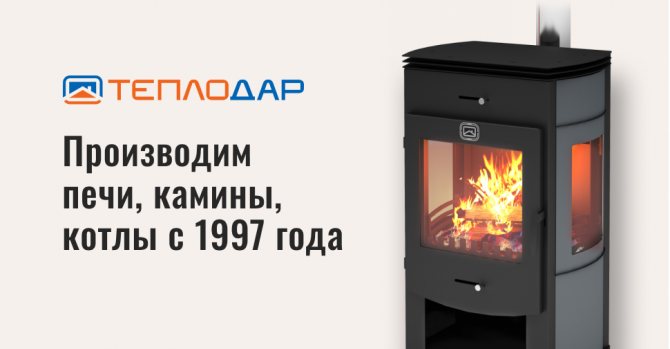

For information on how to choose the best stones for the bath, see below.
The first way of laying
Considering the procedure for placing stones in a sauna stove, it is worth noting that there are two ways. The first approach is used for open heaters. In this case, harmful gases that are released during combustion will not escape from the stove into the room. Heating will take place due to the sufficient temperature of the walls of the furnace. Soot and soot will not settle on the stone backfill. Their particles will not appear in the steam bath.
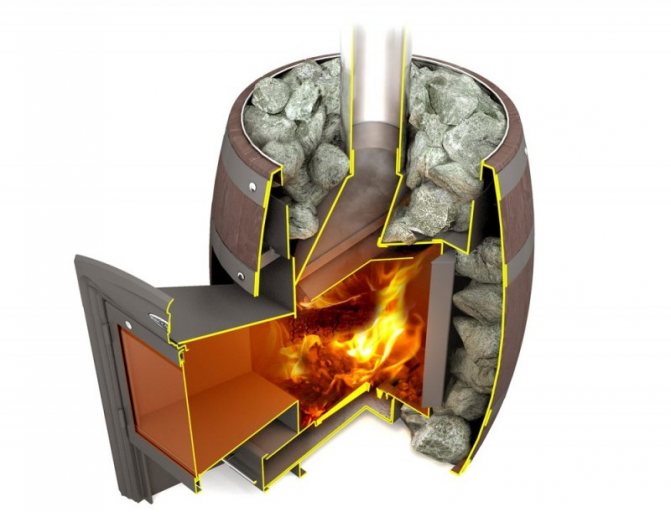

Open heaters take longer to heat up than closed heaters. Therefore, more firewood is required for kindling. Therefore, such a system can be considered uneconomical. But with electric heating, it is impossible to heat a room without an open heater design.
In open types of structures, for example, in a Finnish sauna, with the correct laying of stones in the sauna stove, it is possible to create walls of minerals around the heating element. They accumulate thermal energy, and then evenly release it into the surrounding space. Since the stones are tightly packed, no steam is emitted. This allows the temperature inside the steam room to rise, but the air remains dry.
Stones can also be placed around the water boiler. They can be quite large. In this case, it will be possible to scoop up the heated water and pour it over the stones. So it turns out to heat the bath in a black way. There will be a lot of couple in this case. By covering the heating element with stones, you can create a high-quality heating inside the room.
How to properly place stones in the sauna stove
What function does a stone perform in a bath? Most see him steam generator, and already in the second place heat accumulator... But these are things that are directly related to each other: vaporization occurs at a certain temperature, to which it must still have time to reach before starting the procedures.
It is logical to assume that the heating rate of the stone will depend on the way it is placed in the sauna oven, but the design of the furnace itself plays a role here. there is convection ovens - they were purposefully created in order to reduce the amount of fuel and the time for heating the premises. As a result, we get a short heating, after which the bath is ready, but the stones are not yet. No matter how you put them, they simply do not have time to heat up in a short time, so they will give weak steam. That's why economical convection ovens are much more often used in saunas, rather than Russian baths.
If you heat an ordinary, for example, a brick stove for a long time, then everything will heat up evenly - both the air and the stove. In this case, the return will also be long, because the heater starts "working" after the stove is no longer heated. Our task is to use some tricks in order to achieve the shortest time to bring the stove to the desired state.
The stone has two important characteristics: heat capacity and thermal conductivity... And if we want to at least slightly accelerate their heating, then closer to the fire, it is better to put those with a higher thermal conductivity and a lower heat capacity. So the heat will be transferred faster to those that lie higher, up to the very top. See the heat capacity table and other details in the article What stones for a bath to choose.
This condition is easy to fulfill if use layers of different rocks. Because there is another rule that practically cancels the first one:
Judge for yourself: the larger the stone, the more heat is needed to heat it up. However, the smallest ones are also not easy to heat - they have a smaller contact surface required for heat transfer. All this can only be solved by choosing the correct size of fractions, which will be discussed below.
So, you have selected the largest copies in the batch and are going to put them on the bottom. How to do it correctly, given that their shape is arbitrary, often extended to one side.
This rule is empirical, but it can also be due to the higher rate of propagation of thermal energy along the layers, and not across them. Another reason for this choice is the need for free passage of hot air between the stones. End masonry increases the amount of gaps between stones.
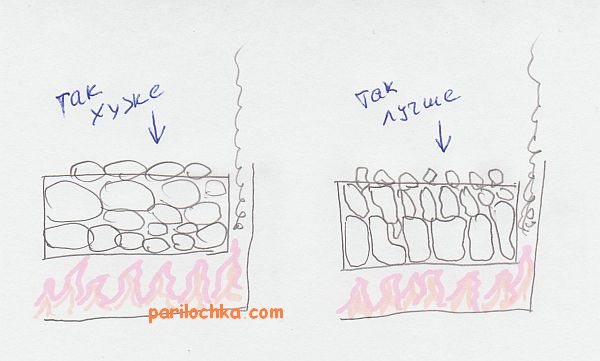

After laying the first row, lay the next fraction as the next row. Laying tightly is still not worth it. After all, in addition to the fact that we must ensure air circulation, we also need to leave a little space for the future. thermal expansion of stones. It is, of course, different for different breeds, but it happens in all cases. The stone increases in size, and dense packing leads to the emergence of compressive forces that destroy the stone.
The second way of laying
Considering how to properly lay the stones in the sauna stove, it is worth considering a different method. It is more complicated than the previous one, as it requires a more careful selection of elements. This method is called closed, since the stones are in the path of the smoke exit from the furnace. They get very hot.
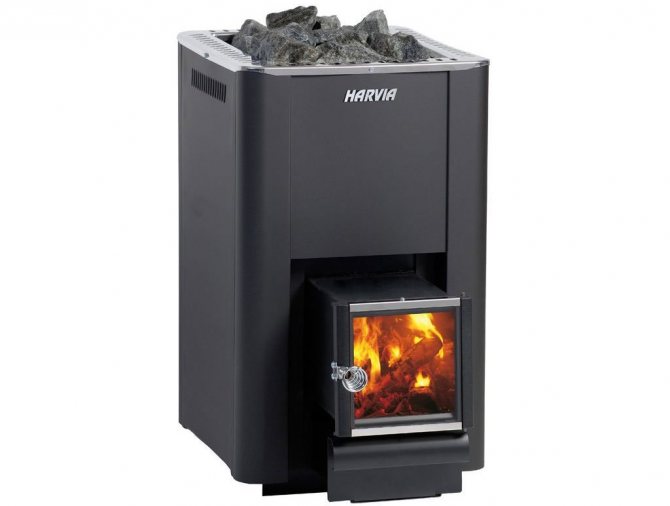

During the bath procedures, water is poured onto the hot stones. It evaporates instantly. Therefore, the steam room is filled with dry steam. If, when pouring water onto the stones, a characteristic pop is heard, it means that the oven is very well heated.
When the filling is closed, the stones are located above the firebox. They are laid out on a cast iron grate. Instead, a brick vault with slots can be provided in the structure. The bottom layer of stones heats up to 1100 ºС. The top layer is slightly colder. Here the temperature reaches a maximum of 600 ºС.
With this method of laying, stones accumulate heat well and retain it for a long time. But this is not so easy to achieve. You need to know how to properly lay each layer of stone filler. This is a whole science. But with careful selection of all the elements of the backfill, significant results can be achieved.
Insulation of the stove in the bath with a stone
A metal stove retains heat better if it has stone "clothes".They buy it either right away with the stove, or later. Moreover, for the most common models, there are usually already cut casings. If there are none, you can always make a custom-made casing.


Stone for facing the stove in the bath - talcochlorite
To date, the most popular facing stone for a bath is soapstone. Therefore, the tile from it became the topic of the article, which just talks about the stone finishing of the stove in the bath.
Correct laying in a closed heater
Not every builder knows how to put stones in a sauna stove. This is a whole science, which can be mastered without difficulty. When arranging a closed oven, gaps are necessarily left between the stones. In this case, during the operation of the furnace, each element of the backfill will be warmed up evenly. Round stones are more suitable for this type of installation. In this case, free space will appear in any case, it will be almost impossible to make a mistake.
There should be no grooves or cracks on any backfill element. Otherwise, the stones will crack, crumble and clog the channels. This will negatively affect the operation of the oven.
Before laying, the stones are sorted by size. Large specimens are laid down, and small ones up. When heated, all stones expand. This is inevitable and will eventually lead to the destruction of the walls of the furnace. Therefore, it must be checked and repaired at regular intervals.
If the stones are packed tightly, they will press on the walls of the furnace even more when they expand. Therefore, such filling is strictly prohibited. Otherwise, the furnace will quickly deform and will no longer perform the functions assigned to it.
How much are the stones for the bath
1. Of the stones purchased in the store, the cheapest are gabbro-diabase. They are recommended as a budget option, having characteristics suitable for a heater at an affordable cost. Sulfides are the cause of the specific odor that spreads from gabbro-diabase when heated. You can avoid this nuisance by carefully examining the stones before purchasing. The price of gabbro-diabase ranges from 25 to 35 rubles per kilogram.
2. Jade and jadeite are available to a narrower circle of consumers. The price for 1 kilogram can go up to 250 rubles.
3. There is also a free option - the most ordinary pebbles, which can be collected from the nearest reservoir. It includes various breeds suitable for use in the bath. Pebbles cannot boast of only having a healing effect on the body.
By adhering to certain rules, you can extend the life of the stones. To do this, do not water them abundantly with water, small portions are enough, but after a shorter period of time. It is recommended to pour hot water over the stove to avoid sharp popping.
What stones for a bath to choose: rating, tips
If you have the opportunity to build a bath or sauna on your site or even in your house, before starting construction, you need to think through many points. One of the main ones is which stones will fit and keep warm as long as possible. Despite the fact that many do not pay attention to this point, we advise you to pay attention to the issue. By choosing the wrong stone, the heat in the sauna will go away quickly and you will not be able to enjoy the procedure for long.
When choosing, you need to take into account several important factors and only after that make the final decision. What you need to pay attention to when choosing stones:
- Dimensions. You can buy both small and large stones. The size depends on which oven you are going to use. If it is on wood, small stones will not work, you need to choose medium or large sizes. When choosing an electric oven, choose a medium sized material. The best option is stones, the size of which varies from 10 cm to 20 cm. Too large or small are not suitable for a bath.
- The shape of the stone.What stones to choose for a bath? The store may offer you material with rounded or pointed edges. We advise you to choose the first material, it is safe and the risk of injury is minimal.
- Density. Pay attention to the texture of the stones, they should not crumble. High-quality material is dense and hard, it does not crumble. Otherwise, the stones simply cannot withstand high temperatures and begin to crumble.
What stones are best used for baths and saunas
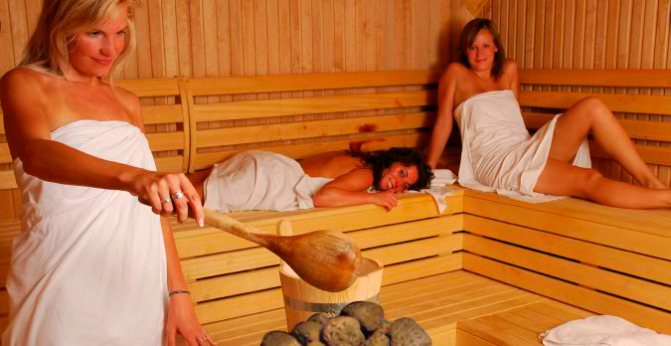

There are several types of stone that are used in the construction of a bath. Opinions and reviews about them differ, each of them has both disadvantages and advantages, which we will talk about today.
Jadeite - withstands high temperatures, does not crumble and is durable enough. In addition, under the influence of temperatures, it does not emit harmful substances, since it is natural. It is widely believed that the stone affects the energy of a person and improves it. On many forums, you can see reviews about what exactly jadeite is most suitable for a bath.
Diabase is an inexpensive stone, but problems can arise when using it, as it has many corners and chips.
Talcochlorite is a little more expensive, but of better quality. It retains heat for a long time and does not cause burns. In addition, the stone releases useful substances that have a positive effect on metabolic processes in the body and on blood circulation.
Gabbro-diabase - you can buy it at an affordable price, the reason is that it does not have any medicinal properties and only gives you warmth. In addition, the stone does not have a very presentable appearance.
Raspberry quartzite - its price is higher, since it not only conducts heat well, but also has useful properties: it has a positive effect on blood pressure and blood circulation.
Basalt is one of the best stones for a bath, but its price is appropriate. It is able to strengthen your immunity and protect against many diseases. Basalt destroys harmful bacteria and microbes not only on the skin, but throughout the body. Also, the stone will strengthen joints and bones, regulate the level of pressure, eliminate headaches, treat diseases of the respiratory tract, skin diseases.
Quartz (white) - also has medicinal properties and, when exposed to hot water and steam, begins to release useful substances that affect the entire body.


If you cannot choose between 2-3 types of stones, we recommend that you use them together. For example, let one layer be quartz, the second basalt, and the third quartzite.
On numerous forums, you can see different opinions about this or that type of stones. But more often than not, positive reviews are devoted to jadeite stone. Despite the fact that its purchase will cost you a tidy sum, it will serve you as long as possible. The stone transfers heat well and, moreover, affects the entire body.
Tags: sauna, what, stone, stove, well
«Previous post
Several expert recommendations
Professionals give some tips on how to put stones in the sauna stove. They recommend rinsing all stones before laying. Often, marine or river varieties of materials are used for this. If the round stone has a blue tint, it is not suitable for use in a kiln. Such pebbles will smoke, releasing carbon monoxide into the steam room.
After sorting through the stones, sorting and cleaning them, you can start laying. It is necessary to lay out the largest backfill elements. They should be directed to the heated surface with a narrow edge. This will allow the stone to warm up quickly. In addition, such a position of the pebbles will not allow heat energy to be reflected back into the furnace, it will easily move upward.
The number of stones is calculated in accordance with the dimensions of the room. Per cubic meter of steam room space, you need from 35 to 45 kg of stones.This indicator depends on their thermal conductivity and ability to accumulate thermal energy.
Long stones must not be laid horizontally. Their location should be exclusively vertical. Otherwise, the heating will not be able to rise up. You can also stack stones on their sides.
Sharp corners of the stones should be directed towards the firebox, and flat ones - towards the walls of the stove. This allows you to accumulate enough thermal energy so that the required temperature is maintained in the steam room for a long time.
Caution! Sea stones
Many people find sea stones for a bath as an attractive option. Heavy, sleek and beautiful, you can assemble them yourself. But practice has shown that such stones do not show well at high temperatures.
Sea stones are formed under the influence of sedimentary or metamorphic processes and do not differ in heat resistance, they quickly crumble and split. Such stones for the stove will last no more than a year and can cause problems.
This is a very cheap option for arranging a stove. These stones can be laid as the first layer, and on top of them - a little soapstone. It is only necessary to select the right pebbles, then the stove will turn out to be beautiful and durable.
It is recommended to take sea stones not oval and ovoid, but flattened ones - in this case, they will fit more in the oven. Thanks to this, accidental ingress of water on the metal will be practically excluded. You should carefully look at the stones - those in which there is even a slight red streak are not suitable for the stove, since these inclusions indicate the presence of iron, the evaporation of which in the steam room will not benefit health.
It is also not recommended to take soft stones for saunas and baths - limestone is harmful to health, especially in the steam room. In addition, it also quickly breaks down and turns into unpleasant dust, which is very difficult to get rid of.
If there is no sea or rivers nearby, then a pretty good pebble can be found under the electric lines of high-voltage transmissions - they were covered with it back in the days of the USSR. Some people even use porcelain cups, although their sustainability is a big question. In addition, they crack, although the steam is good. The only problem is that the cups are inconvenient to put in the oven.
Operating time of stones
Having studied how to put stones in a sauna stove, you need to pay attention to the issues of their operation. Over time, the backfill needs to be changed. It is recommended to completely change the stones every 3-4 years. This is due to the accumulation of soot and toxins on the surfaces of the backfill elements. Due to expansion and contraction during heating and cooling, even strong stones begin to crack and crumble. Blocking the channels, they reduce the heating efficiency.
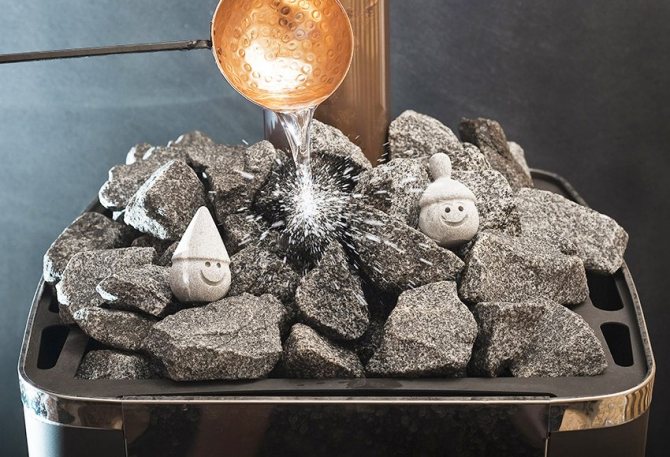

To make the stones last longer, do not pour cold water on them. Also, they should not be allowed to come into contact with open fire.
How to prepare a stone?
Preparation includes testing. You need to do the following:
- just soak the batch in water without anything for several hours (you don't have to do this, but this is also a test: watch out for gas bubbles - this is a sign of cracks, specimens with bubbles must be removed);
- then go over each well with a stiff brush and rinse under running water.
The washed batch can be ignited and thrown into water. If any of them break, they will be rejected.
In the future, the stones will need to be sorted out with a certain regularity. You can do this once a year, every six months, every season. Deterioration in the quality of heating can be a signal for an unscheduled revision.
Furnace maintenance
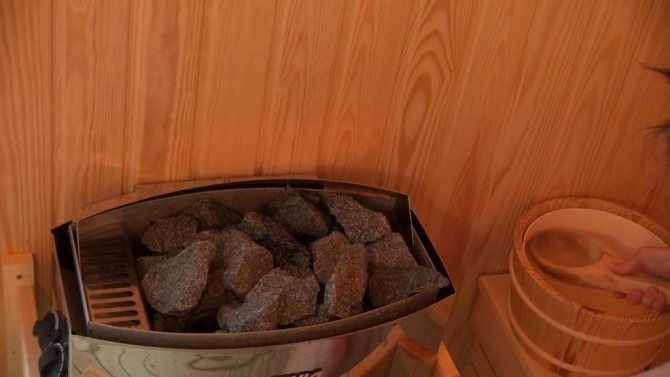

During the maintenance procedure, you can leave whole stones. They are cleaned and rinsed in cold water. This must be done if the stove does not warm up well, does not keep warm. Most often, you have to change the filling completely. After a certain period of operation, the stones burn out, they are called "dead".The breed loses its ability to store heat. The smaller the stones, the faster they will need to be replaced.
Parameters for choosing stones for a bath
When choosing a breed for a bath, it is important to focus not only on its external attractiveness, but also on compliance with certain requirements.
Under the influence of the temperature drop, the stone should not crack, crumble. Check the stability by heating the mineral, then dipping it into cold water. You can verify the strength of the stone in the store by knocking one against the other.
We suggest you familiarize yourself with: Wooden frame for a bath
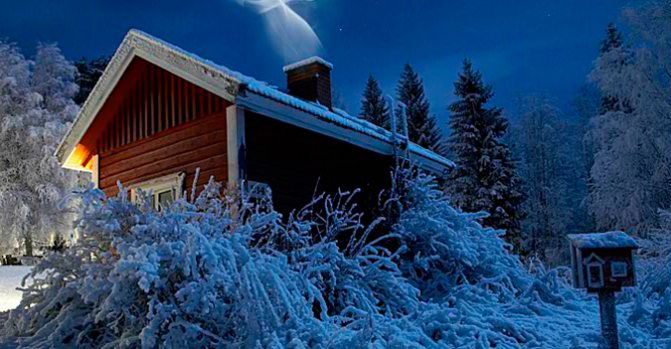

2. Ability to keep warm
This is one of the most important properties that sauna stones should have. It is checked by specific gravity - the stone must be dense, heavy.
3. Homogeneous structure
Another sign of a quality mineral. Various inclusions on the stone indicate the presence of impurities that can be very poisonous. Standing out when heated into the surrounding air, they can cause irreparable harm to health.
Rounded flat stones are preferred in shape. They retain heat better, and air circulates faster. In addition, flat stones fit better in the oven and have a more aesthetic appearance. Stones are selected of the same size - large (from 70 to 130 mm in diameter) or small (50-60 mm). Which one to choose depends on the size of the heater.
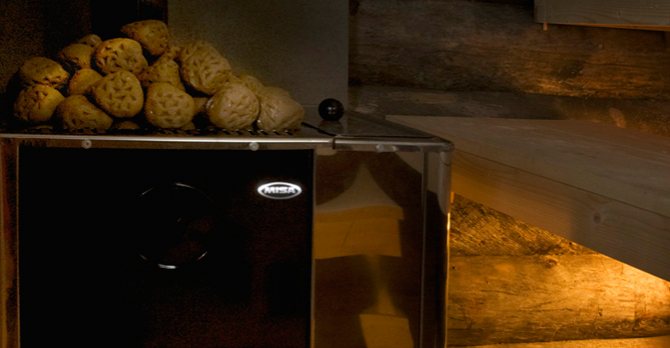

The most important condition for choosing is environmental friendliness and safety. For example, stones collected near a railway line are often impregnated with a poisonous composition, the vapors of which, when heated, end up in the air. When purchasing minerals in a store, you need to make sure that there is a mark on the package about the passed radiation control.
As a result of constant heating of the stove, its contents are damaged over time, and the heat output decreases by 20% every year. It is necessary to check the stones annually, rinsing them with water and replacing those that have become unusable with new ones.
Of course, not every stone of natural or artificial origin is suitable for use in a bath. Many rocks contain impurities in their composition, which, when heated, can emit harmful substances and damage health. Also, not every stone is designed to interact with high temperatures, fire and water. Therefore, the choice of stoves for a bath must be approached wisely.
There are certain requirements that apply to the types of stones. Let's list the main ones, and then we'll take a closer look at each requirement:
- resistance to high temperature influences and their drops
- heat capacity (heat accumulation property)
- ecological cleanliness
Learning to choose and care for stones
When choosing bath stones yourself, you should pay attention to the following parameters:
- Appearance. If a certain rock does not imply irregularities in color or inclusions (for example, basalt or quartz differ in this), then stones should be purchased as homogeneous as possible. Over time, mica will cause the bath stone to crack.
- Surface (chipped or sanded). The first is capable of giving off a large amount of saturated steam when interacting with cold water. Stones with a polished surface are preferred for generating dry steam. However, it should be borne in mind that rounded, polished stones take longer to warm up.
- The size. Stones are also selected depending on the dimensions of the furnace. The combination of large (70–130 mm) and small (50–60 mm) stones will provide an advantage in retaining steam and protecting the metal parts of the stove. For example, flat small pebbles are stacked on top, medium and large in the lower layers. Thus, the water cannot reach the metal of the furnace, the steam will be saturated, and the heat capacity will increase.
- Loot locations.Quality stones for a bath in specialized stores have the appropriate certificates, which indicate their origin, the fact of passing radiation control and a mark of compliance with safety standards. If the seller cannot offer this, it is better to refuse the purchase.
- No defects (crumbs, cracks). This is a sure sign that the bath stones will last a long time.
- Weight. The stones with the best heat capacity are heavy specimens with a dense homogeneous structure. If there is no gravity, there may be voids inside the stone, contributing to the bursting of the mineral during heating.
In case of contacting a specialized store, the seller is obliged to provide you with full information about the product. Otherwise, it is better to find another supplier or risk taking up the selection of bath stones yourself.
Consider each carefully before purchasing furnace minerals. There should be no cracks on them, and the structure should be dense. To test for strength, you can take two elements and hit them against each other. They should not crumble, and the sound will be sonorous. A more effective way to hit with a hammer, but this is prohibited in stores.
You can check already purchased items by heating them to a high temperature and pouring them into a bowl of water. If no cracks appear, then the purchase can be used in the sauna stove, and the heat transfer from them will be uniform.
Do not forget that everything has its own service life, and the heater is heated all the time. Its contents quickly deteriorate. The heat output from the heater decreases by 20-30% after a year. It is necessary to take out all the material once a year, inspect and replace the damaged one. Whole ones are washed under running water. If possible, it is better to change the contents of the stove altogether once a year.
For less cracking, it is better to take smooth, rounded stones. In addition to strength, they will better give off heat and air circulation in the steam rooms will be faster. Uneven ones with potholes when heated will quickly begin to collapse and crack.
The size of the stove matters when choosing stones. If a small iron stove is used, it is better to use a smaller fraction. For brick wood stoves, massive and heavy specimens are suitable.
It is important not only to choose the size, but also to arrange them in the oven container. It all depends on how the heater is located.
The stove usually heats the stove from below. In this case, the largest fraction is placed from below, a layer from the middle and the smallest ones is laid on it. So the grate between the container and the chamber where the fuel is burning will be closed minimally and the stove will warm up faster.
Stones with a layered structure, sandy interlayer cannot be used for a bath. Crumbles quickly and clogs up the air circulation holes, the steam will be less, and the smoke will go away worse.
You can hear how the seller recommends using volcanic minerals for the bath. This is a big mistake! They really heat up faster and keep the heat for a long time, but when water is supplied, the fraction splits, throwing small particles into the steam room. They can be harmful to health, so using volcanic stone for a bath is not safe! They can only be used with a protective mesh.
Specialized departments offer the buyer both artificial and natural natural materials. Natural is better, it is environmentally friendly and brings healing energy to the bath.
Artificial ones are cheaper and warm up faster, but they do not hold the temperature for long, and their energy is dead. There is little benefit from such a steam.
It is better to buy stones in specialized stores, this is facilitated by a number of factors:
- Not everyone has access to different types of stone and is able to distinguish one from the other.
- The optimal fraction for the furnaces is selected for sale.
- Before being sold, the stones undergo a special treatment and foreign microorganisms and viruses will not get into the steam room.
The correct stones for the sauna stove should not only have the right size, density and shape, but also the breed. Consider the rocks of minerals that have proven themselves in the steam room only from the best side.
How to put stones in the sauna stove correctly? This question is asked by almost every customer. Along the way, questions arise:
- What's the best way to heat a stone?
- How much backfill should be?
- How to prepare a stone?
- How to choose a stone?
- How much stone should be used?
Let's immediately define the volume. The volume of stonework in the furnace must comply with the requirement for maintaining the microclimate of the steam bath and the intensity of vaping. In the absence of a steam generator at the stove, the stone should provide high-quality vaping throughout the entire period, and then it turns out that there should be a lot of stone.
But a lot is a relative concept, since a stone heated to 200 * C will give out several times less steam from the same amount of stone that is heated to 400 * C. And this concept suddenly begins to depend on the design of the stove, the selection of its power and the skill of the bathhouse attendant. In many passports, a standard calculation of stones for a bath stove is given, which is tied to the area of a steam room equal to 30 - 50 kg of stone per 1 square meter.However, this is such a primitive selection that it is more suitable for a black bath.
If anyone does not know, the smoke sauna had a hearth with stones of at least 500 kg, which were heated with an open fire to a state of crimson glow. The stone, of course, was heated for a very long time and it was an unfortunate decision, but at that time it was practically the only one. A well-heated stone to a crimson glow, of course, had an excellent vaporization ability. For this reason (steam quality) the smoke sauna was declared a classic sauna.
And since stones at that time were the only source of steam. Then certain requirements are put forward for them:
- The stones must be resistant to high temperatures.
- The stones must have a good heat storage capacity.
- Purity of stones from salts of heavy metals, radioactive elements and any organic and harmful impurities.
- In addition to accumulating heat, the stone also needs to quickly release it.
- The bath stone is also valued for its mechanical strength to sharp cooling after strong heating.
- Since the stone is poured into the equipment, the requirement for the preservation of this equipment is the minimum temperature expansion.
- And, of course, the stone should be pleasing to the eye - the beautiful shape and color matter.
Before laying the stones, they are washed in running water. They sort it out - rejecting: with cracks, streaks uncharacteristic for it, an extraneous smell. After that, the stone is laid in the stove first, the largest one. In the intervals and from above it is small, the stone is laid tightly to the surface of the stove and without voids in the stove - the quality of its heating depends on this.
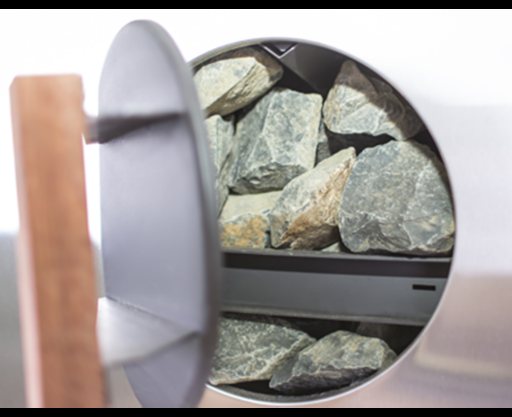

The stone should not be placed against the heated surface with an edge, only with a plane - this will accelerate its heating. The stone for open and closed heaters fits equally tightly without any difference. The only difference can be for stones heated by direct fire and hot gases - these stones are laid loosely without a small stone, so that hot air or flame can move freely between the stones.
We invite you to familiarize yourself with Chimney sealant: refractory stainless steel chimney sealant for chimney, heat-resistant material
It must be remembered that it will take more time to heat the stone - firewood and in a closed heater than in an open ventilated one. This is due to the fact that stones in a closed stove are heated by the contact method of transferring heat from the walls of the furnace - inside the stone - to the walls of the stone - to the next stone, etc. In a ventilated stove, in addition to the contact method, hot air participates in heating (by the type of heating a stone placed in a closed stove of a furnace heated with hot gases)
Another very important requirement is how much stone to put on the heater. For example, in a closed heater you will not put more than the box holds, but an open heater gives a flight for the various desires of some to enlarge the heater
The logic of such actions is simple: we need steam - steam gives a stone - that means more stone is needed - and there will be a lot of steam. But no! The more stone we put, the less steam we get. There is a pair that you can steam. The upper stone does not heat up, and takes on water, evaporating it gradually and worsening the microclimate of the bath.
In such baths it is damp and there is nothing to breathe. The stone should never be placed above the edge of the heater. Nothing will benefit from this. Large heaps are arranged by managers in advertising whole. But this is a fake and nothing more. Take the right stone, place it right, and get the right steam. Watch our videos. What is not clear ask on our forum. We will definitely answer. Experts to help you.
Choosing the right sauna stones is only half the battle. It is also necessary to properly prepare them, and then put them in the stove.
After the stones have passed a thorough external examination for the search for defects and cracks, it is recommended to pre-treat them in a weak saline solution for 1-2 hours.
Before placing stones in the sauna stove, they must be rinsed and dried in a natural way.
Thereafter:
- large specimens fit into the lower part of the heater;
- further - average;
- y - small, at least 5-6 mm in diameter.

